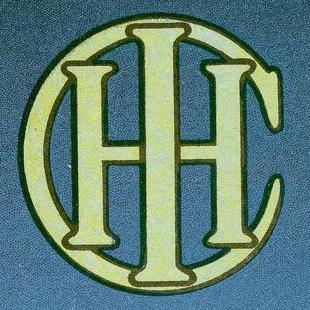 International Harvester Co
International Harvester Co. was formed Aug. 12, 1902, when McCormick Harvesting Machine Co., Deering Harvester Co., Plano Harvester Co., Milwaukee Harvester Co. and Warder, Bushnell & Glessner Co. merged. Cyrus H. McCormick Jr. was named president of the board and Charles Deering was named chairman. In the marketing of farm implements
International Harvester Co. retained the
Deering and
McCormick Deering brands for many years.
The No. 6 mower was introduced by International Harvester in 1914 as a successor to the No. 4 mower, remaining in production until 1934. While the No. 4 that it replaced came in only two flavours, the No. 6 came in four flavours (No.6-4½ and 5-ft., No.6 Vertical Lift-4½ and 5-ft., Big 6-4½ 5, 6, and 7-ft., New Little Vertical-3½ and 4-ft.), each with a choice of sickle bar lengths. This unit appears to be a No. 6 Plain Mower, with a 5 foot sickle bar.
The No. 6 appears to have retained open drive gears throughout its production, the No. 7 being the first model to have enclosed gears that ran in oil, increasing the lifespan of the gear train. International Harvester literature of the time include photos of the No. 6 which indicate it to be intended to be pulled by two or three horses.
A History of Hay Equipment:
Evolving from Manual Mowing
By 1831, several inventors had developed mowers using a variety of techniques to cut forage. Those included use of a revolving reel of blades, a rotating knife-edged disc and mechanical scissors. None was completely satisfactory. In 1833, Obed Hussey, Cincinnati, improved upon an 1831 design by William Manning, Plainfield, N.J., creating what would eventually be refined as the sickle bar mower. Hussey’s design principles remained the foundation for subsequent mower development.
The company launched by Cyrus H. McCormick of Virginia didn’t impact the mower industry until 1908. In 1834 McCormick applied for his first reaper patent. The patent application included his description of the machine’s vibrating blade that cut the grain. “I particularly claim the cutting by the means of a vibrating blade, operated by a crank, having the edge either smooth or with teeth,” McCormick wrote, “and projecting before it, for the purpose of staying or supporting the grain whilst cutting.”
William Deering, who amassed a fortune through a dry goods business, was seeking new opportunities in 1870. An old acquaintance, Elijah H. Gammon, convinced Deering to invest in his harvester manufacturing business. By 1872, he became a full partner in the company. In 1880, Deering bought Gammon’s share of the business.
In 1885, Deering began producing a line of mowers. Between 1893 and 1911, the company produced the Ideal Plain Lift, Ideal Giant, Ideal Vertical Lift, Ideal 1-Horse Plain Lift and Ideal 1-Horse Vertical Lift. Between 1886 and 1915, McCormick marketed the New 4 Mower, New Big 4 Mower and Vertical Lift Mower.
In 1911, International Harvester began producing implements such as mowers, tedders, rakes and fertilizer distributors under the McCormick name. The McCormick-Deering line of mowers included the No. 6 Plain Mower, No. 6 Vertical Lift Mower and Big 6 Mower. In succeeding years the company produced the McCormick-Deering No. 6 Plain Lift Mower, No. 7 Regular Lift, No. 7 Vertical Lift, Big 7 Regular Lift, Big Trailing – Regular Lift, and the No. 9 mower (also known as the McCormick-Deering Enclosed Steel Gear Mower). From 1939 to 1946, the company offered a regular size and heavy size No. 9 mower.
From Farm Collector